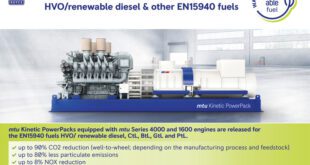Diesels fuels are now giving off cleaner emissions
New Legislation
The 2010 Emissions Regulations passed in by the EPA demand major reductions in the NOx and NMHC emissions produced by diesel engines. Under the new regulations, diesel engines manufactured after January 1, 2010, are required to emit less than 0.14 grams per brake horsepower hour (g/bhp-hr) of non-methane hydrocarbons (NMHC) and 0.2 g/bhp-hr of nitrogen oxide (NOx). To comply with the new NOx emission limits, most manufacturers of diesel trucks are using Selective Catalytic Reduction (SCR) systems. These systems reduce heat loads on engines and improve fuel efficiency while lowering NOx emissions.
What is an SCR system?
The SCR systems are fairly simple. They require the installation of a tank of diesel exhaust fluid (DEF)—a mixture of 67.5% de-ionized water and 32.5% automotive grade urea— plus wiring and sensors. SCR systems inject a vapor of DEF into the truck’s exhaust stream and the DEF then converts NOx emissions into water vapor. Roughly one gallon of Diesel Exhaust Fluid is needed for every 100 gallons of diesel fuel, so the DEF tanks don’t have to be huge or add too much extra weight to trucks. The complete infrastructure for DEF distribution is still being developed, but it’s already available from pumps, in drums and in smaller pre-packaged containers at travel stops across the U.S.
DEF safety and storage
DEF is mildly corrosive but basically safe. OSHA regards DEF as mildly irritating to eyes and skin and recommends using soap and water on equipment or body parts that come in contact with it. Diesel Exhaust Fluid is clear and watery with a slight ammonia smell, and it needs to be stored at temperatures between70 and 11 degrees Fahrenheit.
Impact of 2010 regulations
The new EPA regulations have caused some operational impact and price increases, but the SCR systems also improve fuel efficiency by up to 7%. These savings on fuel, plus the systems’ light weights and ease of operation, make SCR systems cost effective in the long run. SCR systems automatically shut down when DEF levels fall below a certain level. This causes the engine to not start and could leave drivers stranded if they don’t have a backup supply of DEF available. So far the distribution system has been adequate and this hasn’t been a problem.
Future of SCR systems and DEF
No one likes the hassle and price increases that go with new environmental regulations, but the impact of the 2010 EPA regulations on NOx should be fairly minimal on the diesel industry. The SCR systems do an excellent job of reducing NOx emissions and their operating costs are more than canceled out by the increased fuel efficiency they provide. The durability and performance of SCR systems over time is unknown, but with their simple design and scarcity of moving parts the systems will likely provide reliable environmental benefits for years.
 Alternative Energy HQ solar power for homes, wind energy, and bio fuel issues
Alternative Energy HQ solar power for homes, wind energy, and bio fuel issues






